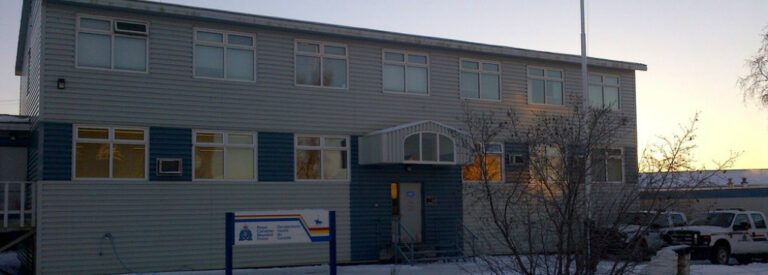Our supercharged construction industry has become tradable
For the past eighteen months, my business partner Rob Warburton has been trying to give away $150,000. We had been approved for a $50,000 grant from the GNWT to install a new wood-pellet boiler in a recent condominium conversion project, but we couldn’t find a contractor to take on the work. It wasn’t that we couldn’t find a price we liked — we literally couldn’t even get a quote.
Dumping on the trades is a popular pastime, but the problem is too systemic to be about the quality of our tradespeople. Contractors must be making a rational decision not to take on our work, but what is that decision?
Industries can be roughly divided into two sectors: tradable and non-tradable. The tradable sector consists of industries that provide goods and services that can be easily imported or exported. A car in Yellowknife sells for roughly the price of a car in Edmonton plus the cost of shipping. Manufacturing, financial services, agriculture, mining, oil and gas, forestry, high tech, film & TV production — all are industries that are generally considered tradable.
Non-tradable industries need, realistically, to be carried out on location by local labour. These include government, health care, tourism, retail, education and, of course, construction.
Because construction is non-tradable, contractors can either staff their projects locally or try to attract southern labour, flying workers up and housing them here. Both alternatives are expensive and difficult, and result in a limited pool of employees. Given the contractor’s restricted labour resources, he or she must choose only a few projects to bid on, and the rational choice is to court the clients that pay the most: the government or the diamond mines.
Rob can’t get a quote for a boiler because his contract is considered too small and not as lucrative as a government or mining project, and the market isn’t flexible enough to bring in labour to take the smaller contracts.
Yellowknife fever
Adding further fuel to the fire are government policies like the GNWT’s Business Incentive Policy (BIP), which awards local companies contracts even when their bids rise up to 20 percent higher than a southern source. For the 2014/15 fiscal year, the GNWT awarded $221 million of the $363 million budget to BIP-registered companies. The use of negotiated or sole source procurement amounted to $101 million. Each policy like this, combined with the sheer size of the dollar flows, has the effect of supercharging the non-tradable industries.
In 1977, The Economist coined the term Dutch disease, to describe the decline in the Dutch manufacturing sector after the development of a large gas field. The mechanism is this: a large development (usually in natural resources) causes a huge influx of foreign money. This money pushes the local currency up, making other tradable industries uncompetitive while creating a parallel boom in the non-tradable sectors.
Leading up to the 2015 federal election, NDP leader Thomas Mulcair brought up the idea of Dutch disease when discussing the Western Canadian oil and gas industry’s damage to the Central Canadian manufacturing industry, as it pushed up the Canadian dollar against the US dollar.
The NWT, and Yellowknife in particular, suffers from a version of Dutch disease, but here the mechanism is the labour market and the non-tradable industries, rather than exchange rates.
The NWT economy naturally favours non-tradable industries (more on this later), and government policies supercharge these industries to the point where previously non-tradable sectors have actually become tradable. The construction industry, where some developers import labour by using southern crews, while others now literally import the product, trucking in manufactured or modular homes, is a prime example of this.
A super-heated housing market is exacerbated by supply constriction, but the demand side of the market is determined mostly by income. Next up, we examine the reality that the NWT’s income source is largely derived externally, and does not depend on the productivity of its residents. In Part Five, we explore whether NWT meets the criteria for a rentier state.
Read Part Five: Is The NWT A Rentier State? And What Does That Mean?
Part One, Part Two, and Part Three
This Article Is Part of a Series
Previous: NWT’s Economic Realities, Pt 3: Why Construction Here Is So Expensive
Next: NWT’s Economic Realities, Pt. 5: Is The NWT A Rentier State?







